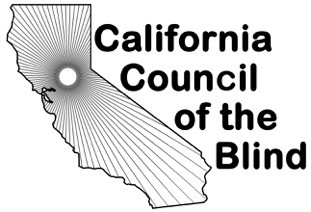by Susan Glass
I've been thinking lately about the differences between belonging to an organization and belonging to a community. The very word "organization" sounds
both sterile and methodical to me, whereas "community" holds so much promise. Communities of people are brought together by common interests, common problems
and common needs. If they are at all ecological, then each member of the community functions best when in concert with all other members. As Judy and I
assemble this issue of the Blind Californian, its articles remind me of the ways in which CCB is a community. As you read the profile of the ACB Capitol
Chapter, you may notice what interests, needs and challenges it has in common with the Orange County Chapter that we profiled in the previous BC. Both
chapters have a rich history. Both are strengthened by members with good advocacy skills and good connections to their surrounding communities. Both are
challenged by the need to recruit more and younger members. Both have constructive ideas about how CCB chapters can collaborate on projects, and how CCB
itself as the umbrella community, can help all chapters grow. Both chapters are endeavoring to balance the needs of their individual members with the overarching
needs of CCB. Both grapple with the fact that there is still so much work to be done by and on behalf of the blindness community, but all in our community
are faced with limited time and resources. The good news is that we are all bound together by common interests, needs and challenges, so our community
won't be going away any time soon. Its structure will certainly change over time to accommodate its members, but I am confident that our community will
prevail.
When you read Cathie Skivers' article about the Ellen Murphy Fund, you'll see how one woman combined her personal resources with CCB in order to improve
the lives of blind women throughout California. This is a case of good leadership guiding a community's vision. Cathie has also shared a personal story
with us about the importance of braille in her life, as well as the prominent role played by the Missouri State School for the Blind in sculpting her character.
To this day, Cathie remains in touch with members of her school community, bonded to them by education and friendship.
Even BC articles that summarize CCB convention proceedings and board meetings are crucial, as they constitute archives of our community in action. We can
only chart our future if we understand our past and accurately document our present.
And speaking of our past, in our next issue of the BC, we plan to celebrate the lives of those CCB members who are 80 years old and counting, in other
words, 80 and beyond. If you fit this category, please shout out to your editors so that we may honor you, and celebrate your life and your contributions
to the California Council of the Blind.
Let me close on a note that I hope is both a way of thinking, and a call to action. When I was a professor at West Valley Community College, I taught a
number of courses with service learning components. Students worked on projects in their local communities, and then incorporated that work into the writing
that they were doing about activism, social structures, literacy, ecology, politics and more. We had a slogan for those service learning courses: "serving
to learn, and learning to serve." I think that slogan articulates our calling in CCB. We serve CCB in order to learn about it as community, as well as
in order to learn about blindness issues and about ourselves. Through our service we learn how to serve. We learn what are skills, strengths and talents
are, and we learn how to share them with our community. That sounds like win-win growth to me.


